
Do you have a question about the Panasonic Viera TC-P50ST30 and is the answer not in the manual?
Instructions to avoid image retention issues on the plasma screen and prevent damage.
Detailed safety instructions covering general electrical safety, installation, and proper usage to prevent hazards.
Specific safety advice related to setting up the TV, including installation, stability, and placement to prevent injury.
Instructions for safe use of the AC power cord to prevent fire and electric shock hazards.
Proper methods for handling the power cord and plug to ensure safe connection and avoid damage.
Safety precautions specifically for the 3D eyewear, including handling, usage, and potential hazards.
Guidelines to ensure child safety, focusing on TV and furniture placement to prevent accidents and injuries.
Details the items that come packaged with the TV, such as remote control, batteries, and manuals.
Lists additional accessories that can be purchased separately to enhance the TV's functionality.
Guidance on pedestal installation, including angle adjustment and safe clearance, and battery installation.
Instructions on how to connect and disconnect the power cord safely and correctly.
How to connect the TV to an antenna or cable service for receiving broadcast signals.
Visual guide and instructions for connecting cables to antenna, pin, and HDMI terminals.
Instructions for connecting devices via HDMI for best picture and sound quality, including 1080p signals.
Guidance on connecting devices using component video and audio cables for good quality analog signal.
Instructions for connecting devices using composite video and audio cables for basic analog signal.
Selects language, country, and viewing environment (Home use or Store Demonstration).
Configures the TV for receiving channels via antenna or cable, including signal type and scanning.
How to assign custom names to input terminals for easier device identification.
Guides through network setup, including selecting connection type and testing the connection.
Instructions for setting the TV's internal clock, either manually or automatically via network.
How to select channels, including direct digital entry and using the remote control.
Instructions on how to select different audio tracks or languages available for a program.
Explains how to change the aspect ratio of the picture to fit the screen or desired view.
Accessing convenient shortcuts for functions like channel surf mode and signal meter.
Methods for entering text and passwords using the remote control or a USB keyboard.
Important safety and viewing advice to ensure a comfortable and correct 3D viewing experience.
How to switch between 3D and 2D viewing modes or manually select 3D formats.
Options for adjusting 3D depth, signal notification, and other settings for optimal 3D viewing.
Overview of the media player's capabilities for photos, videos, and music playback.
Instructions for inserting and removing SD cards and USB flash memory devices.
Steps to display and play photos, videos, or music files from connected storage devices.
How to sort photos and create 3D images from two standard photos.
Instructions for connecting a Panasonic DVD recorder (DIGA) to enable VIERA Link functionality.
How to connect home theater systems or AV amps for integrated audio and control.
Steps to connect HD camcorders or digital cameras for viewing and control via VIERA Link.
TV automatically switches input when connected equipment starts playback or turns on/off.
Synchronizes power on/off status between the TV and connected VIERA Link compatible equipment.
Features to conserve energy, like ECO Standby mode and automatic power off.
Minimizes audio delay for synchronized picture and sound when connecting to audio systems.
Selects between TV speakers or home theater speakers for audio output.
How to operate connected HDMI devices using the TV remote control.
How to share and play media content (photos, videos, music) from DLNA certified media servers on your home network.
Steps for connecting the TV to the internet using a router or directly via an Ethernet cable.
How to connect the TV to a wireless network using a Wireless LAN Adapter and Access Point.
Performing a test to verify the network connection and internet access.
Detailed steps for setting up a wireless network connection, including searching for networks and security configuration.
Configuring IP and DNS settings for network connectivity, either automatically or manually.
Instructions for configuring proxy settings if required by the internet service provider.
Setting the TV's network name, managing network cameras, and updating software.
How to check for and perform software updates for the TV.
Steps to select a DLNA server and browse its contents (photos, videos, music).
Automatically scans for and adds available channels to the TV's memory.
Manually editing, adding, or skipping channels and managing favorite channels.
Checking the signal strength for antenna channels to troubleshoot reception issues.
How to access and navigate through the TV's main menu and sub-menus.
Specific picture adjustments for HDMI inputs, including RGB range and content type.
Advanced picture adjustments like 3D Y/C filter, color matrix, noise reduction, and motion smoother.
Settings for bass, treble, balance, AI sound, surround, and volume leveling.
How to set the TV to turn on or off automatically at specific times or after a period of inactivity.
How to lock specific channels, games, programs, or VIERA Connect features using passwords.
Settings for displaying closed captions, including mode and digital caption configuration.
Managing network connections, VIERA Link features, and energy-saving options.
Lists compatible file formats for photos, videos, and music when using media player or DLNA.
Specifics about HDMI connections, including compatibility, signal types, and HDCP protection.
Proper methods for gently cleaning the sensitive display panel surface to avoid damage.

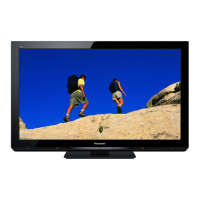
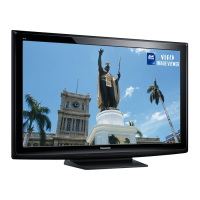
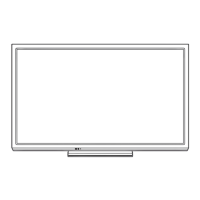
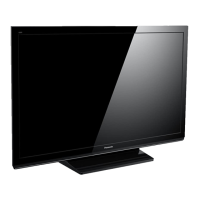
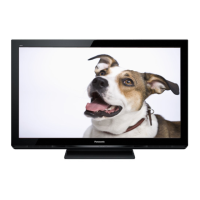

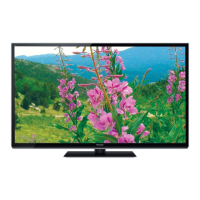
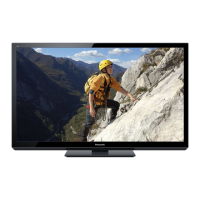
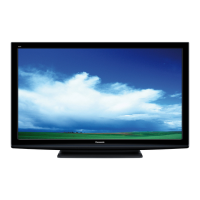

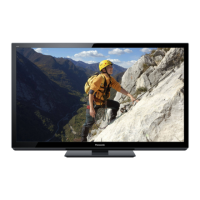
